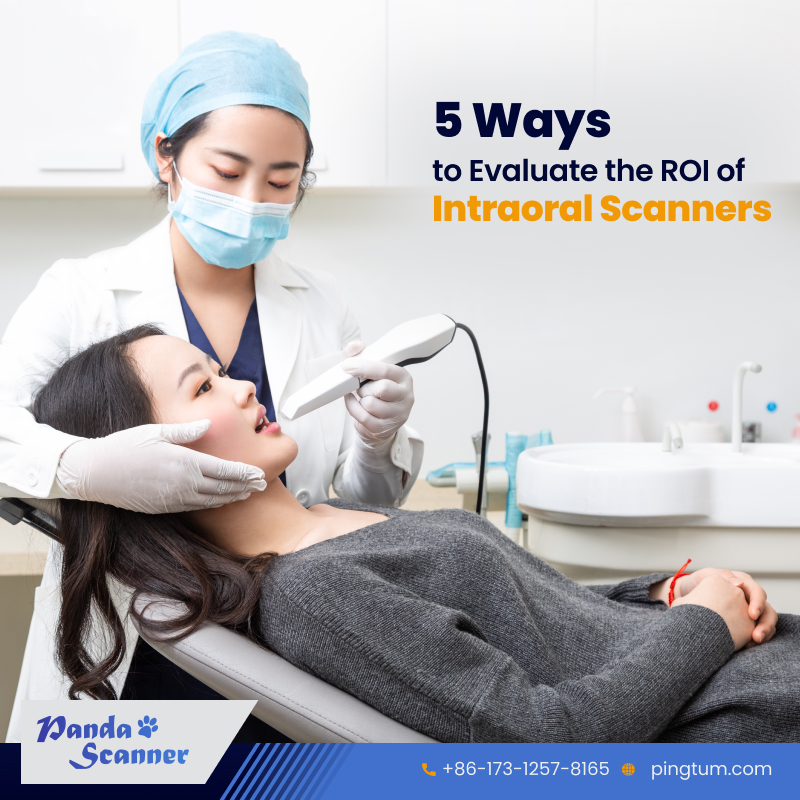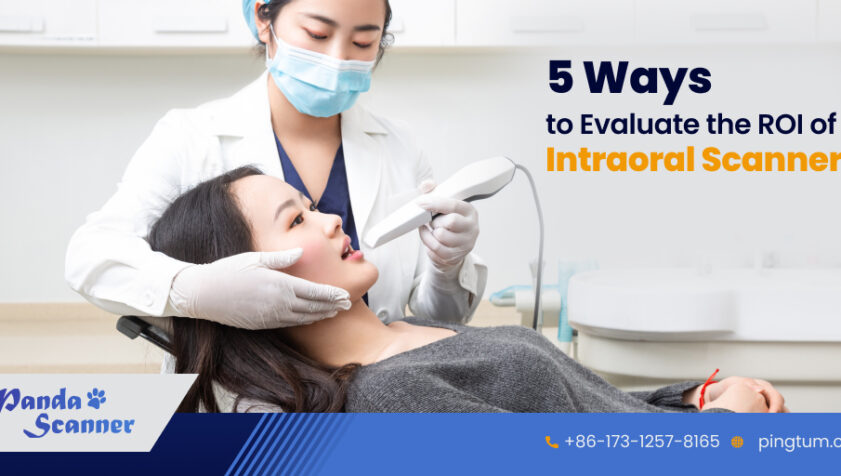Due to the higher accuracy, speed, and convenience that intraoral scanners offer, many dentists are quickly replacing the traditional impression system with its digital counterpart. Yet, to some, a question continues to nudge: “Will investing in an intraoral scanner be a fruitful decision? Will it give a proper ROI?” This is natural for anyone to ask because, after all, it is the end result that matters. To help you evaluate the ROI that you can expect from an intraoral scanner, in this blog we have discussed some of the top ways in which you can precisely measure the return on investment.
Take a look at the points so that you can make a wise decision.

The Top 5 Ways to Measure the ROI of an Intraoral Scanner
If you have been using the traditional impression system for years and are now shy about investing in an intraoral scanner, then here are some of the points that can help you realize how it can help you:
#1. Cost reduction
Intraoral scanners offer a slew of benefits, but the primary benefit is that they have helped to completely eliminate the use of impression materials. With the help of the scanner today, the doctor can capture numerous impressions in a few minutes. Not only does this help reduce patients’ chances of choking and gagging, but it also helps dentists save money. For instance, you can totally eliminate the cost of materials; hence, the multiple sittings and extra expenses are removed. Plus, the dentists are not required to bear the cost of storage. Hence, in terms of expenses, an intraoral scanner would be an economical choice to make.
#2. Educates the patients and boosts their acceptance
Patients across ages are anxious about dental treatments; the anxiety mainly arises from the treatment’s discomfort and pain. In the traditional approach, patients are required to hold the unpleasant wax-up model in their mouth and wait until the dentist is satisfied with the impression. Digital dentistry is a great departure from this, as it has totally changed how dental impressions are obtained. With the help of intraoral scanners, dentists can now easily capture the impressions of patients with the pen-like scanner and a light projection in the treatment area. During the scanning sessions, the patients can relax, chat with the dentist to get answers to their queries and become involved in the treatment by watching the entire process on the side monitor. This increases their trust in the dentist.
#3. Less turnaround time and retakes
With the help of intraoral scanners, dentists can easily reduce the time consumed in treatment and diagnosis. Plus, higher accuracy also eliminates the need for patients to visit the clinic multiple times. Thus, when dentists use intraoral scanners, they can easily attend to more patients in less time, and that implies they can generate more revenue than they could use the traditional impression system.
#4. Multiple uses
If you buy a good intraoral scanner, such as a Panda scanner, you will have a tool that is good for multiple applications. For instance, you can use it for clinical applications in areas such as restorative, orthodontic, and cosmetic dentistry.
#5. Enhanced efficiency
Why would the majority of dentists start embracing a new device? The minimum expectation we tend to have when we switch technologies is that it will be convenient and faster. Right? This is what the intraoral scanners also offer. Working with intraoral scanners is fun, and you can diagnose, perform treatment, and find solutions extremely quickly.
Take away
Everyone wants to find a way to increase revenue generation. Hence, it is natural for you to have it, and we understand that. So, if you are someone who, before investing in an intraoral scanner, wants to ensure that it will be profitable, then we appreciate your decision. To help you find out accurately, we have explained here the important points that will hopefully support you in making the right decision. Hence, just take a look at the points and try to understand the crux of them.






